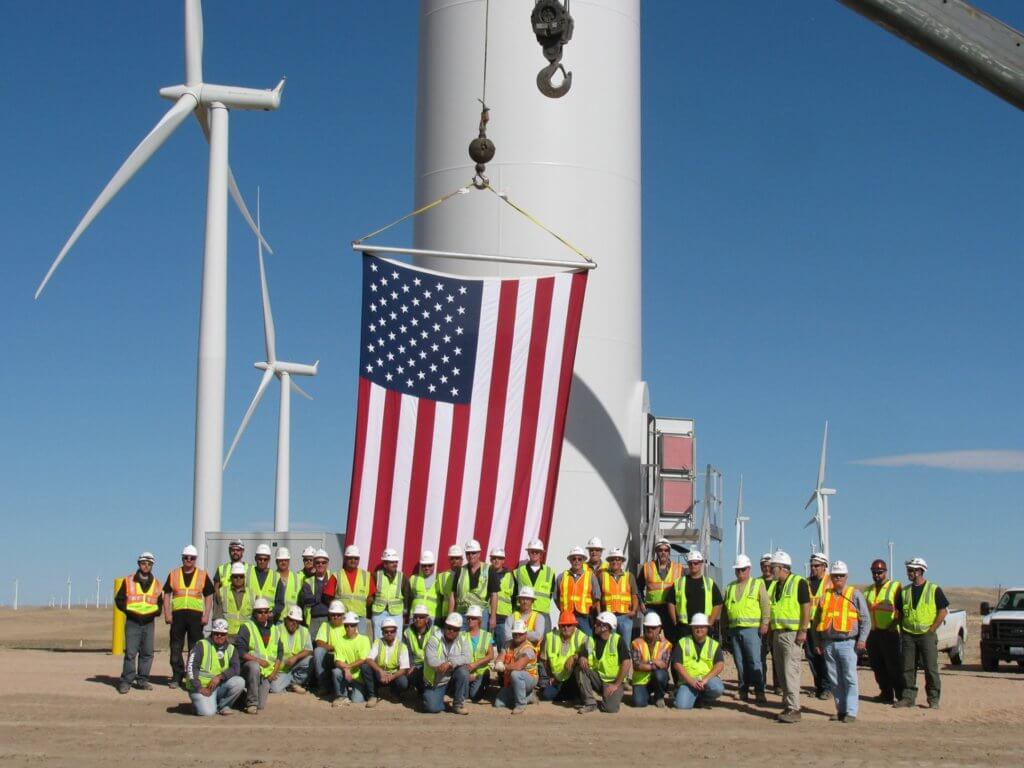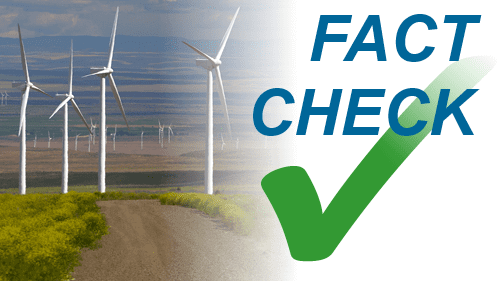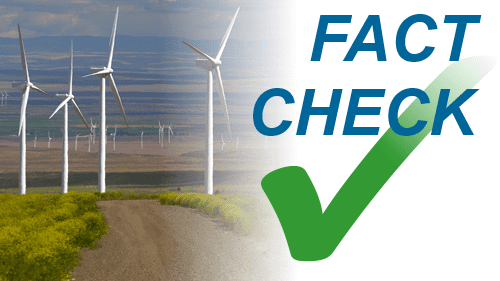Fact check: Bryce stumbles on land use, sound, steel, benefits
The New York Times has an opinion article today from Robert Bryce of the Manhattan Institute that criticizes solar and wind power and contains a number of factual errors and omissions. Mr. Bryce is a frequent critic of wind, on a variety of grounds, and the Manhattan Institute receives funding from Koch Industries, one of the nation's largest fossil fuel companies, as well as ExxonMobil.
Contrary to Mr. Bryce's assertions:
Land use: While the boundaries of wind farms may be large, wind turbines actually use very little land. A 2008 study by the Department of Energy under the Bush Administration found that if wind power provided 20 percent of America's electricity, the actual space occupied by wind turbines, related equipment such as substations, and service roads would be less than half the size of the city of Anchorage, Alaska. That is because 95 to 98 percent of the land within a wind farm's boundaries remains available for ranching, farming, wildlife habitat, recreation, or other compatible uses. Furthermore, wind's benefits, in the form of land rental payments to farmers, are spread as widely as the turbines, providing badly needed income to rural towns and counties across the U.S. (see "Counting wind power's rural economic benefits: Sherman County, Oregon," May 31).
Sound: With regard to low frequency sound and infrasound, most of which is below the level of human perception, multiple peer-reviewed scientific studies have found no human health effects and that at distances of 1,000 feet or more, such sounds from wind turbines fall well below existing standards previously established for other types of equipment (see "WINDPOWER report: New study finds minimal low-frequency and infrasound impact from wind turbines," May 25) and are lower than ambient sound in a typical home or office. While some people–particularly those who dislike the appearance of wind turbines–may find their sound annoying, thousands of people around the world and across America live near or within wind farms without concern.
Material requirements: Requirements of wind power for steel and other raw materials are also addressed in the 2008 Department of Energy report mentioned above. Here, for example, is what that report had to say about steel: "The steel needed for additional wind turbines is not expected to have a significant impact on total steel production. (In 2005, the United States produced 93.9 million metric tons of steel, or 8% of the worldwide total.) Although steel will be required for any electricity generation technology installed over the next several decades, it can be recycled. As a result, replacing a turbine after 20+ years of service would not significantly affect the national steel demand because recycled steel can be used in other applications for which high-quality steel is not a requirement (Laxson, Hand, and Blair 2006)." [emphasis added]
Transmission lines: While transmission lines are needed to tap America's abundant renewable energy resources, the fact is that the nation's transmission system in general needs a significant upgrade to improve reliability and avoid periodic, costly blackouts. A stronger transmission system will benefit us all, because high-cost energy suppliers will no longer have monopolies in local areas or regions. At the same time, the costs of new lines to windy areas can be quickly recovered because of the very low-cost wind energy (zero fuel input) they will ship to cities and other centers of electricity demand.
Offshore wind costs: Offshore wind competes with the most expensive electricity — peak power for large coastal cities. Also, it requires few additional transmission lines and would be located so far offshore as to be barely visible, far reducing the difficulty of siting power plants near urban areas.
Benefits of wind power: Mr. Bryce omits mention of these. According to the Department of Energy report, if wind power generated 20 percent of U.S. electricity:
– The wind energy industry would support 500,000 jobs.
– America's electricity supply would become substantially more diversified, with wind displacing 50% of the natural gas and 18% of the coal that would otherwise be burned in power plants.
– Wind farm developers would pay more than $600 million annually in rent to family farmers, ranchers and others around the country, providing a long-term steady income source. See the stories of Iowa farmer Tim Hemphill and Wyoming rancher Shaun Sims for examples.
– Wind farm developers would pay more than $1.5 billion in property taxes.
– The use of increasingly scarce fresh water by the electric sector would be reduced by 17%, because wind uses virtually no water, in contrast to every other form of utility-scale energy generation, all of which use large amounts.
– Many other impacts of our existing energy system–from mining and transportation of fuels and from waste disposal–would also be reduced.
The net increase in cost above a no-new-wind scenario would be just 2%, or about 50 cents a month for the average American household.
Negative impacts of our existing energy system: Mr. Bryce also omits any mention of these, but they range from the nuclear catastrophe still unfolding in Japan to gas pipeline explosions, the air pollution that kills thousands of Americans each year, and many, many more.
It’s unfortunate that wind power's success is viewed as a threat, when wind and natural gas, which Mr. Bryce champions, should be partners in a diverse electricity portfolio.
Related articles on disinformation from Robert Bryce:



